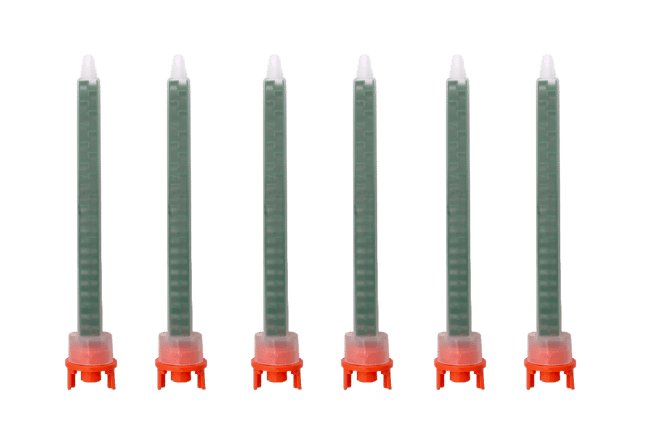Resin crafting is a captivating art form, offering endless creative possibilities. However, the presence of unsightly air bubbles can diminish the beauty of your resin projects. Fear not! With the right techniques and know-how, achieving bubble-free resin creations is within your grasp.
Understanding Resin and Air Bubbles
Resin, a versatile polymer compound, undergoes a chemical reaction when mixed, resulting in the hardening and solidifying of the material. However, during the mixing and pouring process, air can become trapped within the resin, forming bubbles. These bubbles, if not addressed, can mar the clarity and smoothness of your finished piece.
Techniques to Prevent Air Bubbles:
1. Mindful Mixing Techniques
Gentle Stirring: When blending resin and hardener, opt for slow and deliberate stirring motions. Aggressive stirring can introduce air into the mixture.
Avoid Over-Mixing: Over-mixing can lead to excessive air entrapment. Aim to stir until the resin and hardener are thoroughly combined without creating unnecessary turbulence.
2. Utilizing Vacuum Chambers
Degassing Process: Employ a vacuum chamber to eliminate air bubbles from the resin mixture before pouring. This method involves placing the mixed resin in a vacuum chamber, allowing trapped air to rise and escape.
Procedure: Carefully pour the resin into the chamber and activate the vacuum pump. Monitor the process as the air bubbles gradually ascend and burst. Exercise caution to prevent the resin from overflowing while under vacuum.
3. Temperature Management
Optimal Temperature: Maintain an ideal working temperature for the resin. Warmer resin possesses lower viscosity, facilitating the escape of air bubbles. However, avoid excessive heat that might accelerate the curing process or cause deformities in the finished product.
Warmth Application: Consider warming the resin slightly before usage, but ensure it remains within the manufacturer’s recommended temperature range.
4. Prudent Pouring Techniques
Slow and Controlled Pouring: Pour the resin slowly and steadily from a low height into the mold or casting. This method allows air bubbles to escape more effectively as the resin flows.
Bubble-Free Layers: For multi-layered projects, pour thinner layers of resin and allow each layer to cure before adding the next. This approach minimizes the entrapment of bubbles between layers.
5. Employing Heat Sources
Heat Gun or Torch: Gently pass a heat gun or torch over the resin surface in quick, sweeping motions. The application of heat helps burst surface bubbles. However, exercise caution to avoid overheating or scorching the resin.
Uniform Movement: Ensure consistent movement of the heat source to prevent localized overheating, which may lead to surface imperfections.
6. Consideration of Resin Types
Exploring Resin Formulas: Different resin formulations exhibit varying properties. Some brands or types of resin are specifically designed to be less prone to air bubble formation. Experimenting with different resin products can help identify those better suited to your needs.
Research and Testing: Conduct research and perform test projects with various resin types to determine their behavior regarding air bubble formation.
7. Maintaining Cleanliness
Clean Working Environment: Keep your workspace, mixing tools, and containers meticulously clean. Contaminants or dust particles can introduce additional air bubbles into the resin.
Preventative Measures: Cover your resin project while curing to shield it from dust or other airborne particles that might settle on the surface.
8. Patience and Observation
Allowing Settling Time: After mixing the resin, allow it to rest for a few minutes. This brief period permits air bubbles to rise to the surface and pop before pouring the resin into the mold.
Observation and Corrections: Regularly inspect your resin project during the curing process. If new bubbles appear, gently remove them using the aforementioned techniques.
9. Using Static Mixing Nozzles

Introduction to Static Mixing Nozzles: Static mixing nozzles are specialized attachments that come with some resin packaging or can be purchased separately. These static mixing nozzles are designed with internal elements that aid in thorough mixing of resin and hardener while minimizing the introduction of air.
Benefits of Static Mixing Nozzles: These nozzles ensure a consistent and homogeneous blend of resin and hardener. Their design reduces the likelihood of air getting trapped during the mixing process, thereby minimizing the formation of bubbles in the mixture.
Proper Usage: When employing static mixing nozzles, attach them securely to the resin and hardener containers. Dispense the resin through the nozzle directly into the mixing cup. The nozzle’s internal structure ensures a thorough blend without excessive agitation, limiting the incorporation of air.
Selecting the Right Nozzle: Different brands offer various nozzle designs. Experiment with different nozzle types to determine which one works best for your resin projects. Some nozzles might be more effective in reducing air bubbles based on their internal geometry and mixing mechanism.
Cautionary Note: While static mixing nozzles significantly reduce air incorporation, it’s still crucial to handle the mixing process with care. Avoid rapid or forceful squeezing of the resin containers, as this can introduce air into the mixture despite the nozzle’s design.
Compatibility and Recommendations: Ensure that the static mixing nozzles you use are compatible with the specific type of resin you’re working with. Some resins may require specific types or sizes of nozzles for optimal performance.
By incorporating static mixing nozzles into your resin crafting process, you can enhance the efficiency of mixing while significantly reducing the presence of air bubbles in your resin projects.
Conclusion
Creating bubble-free resin masterpieces demands patience, precision, and experimentation. By employing these meticulous techniques and understanding the behavior of resin, you can elevate your craftsmanship to produce stunning, flawless creations.
Remember, mastering the art of air bubble prevention in resin crafting is an ongoing learning process. Embrace the journey of discovery and refinement, and soon, your resin creations will boast an impeccable, bubble-free finish!
